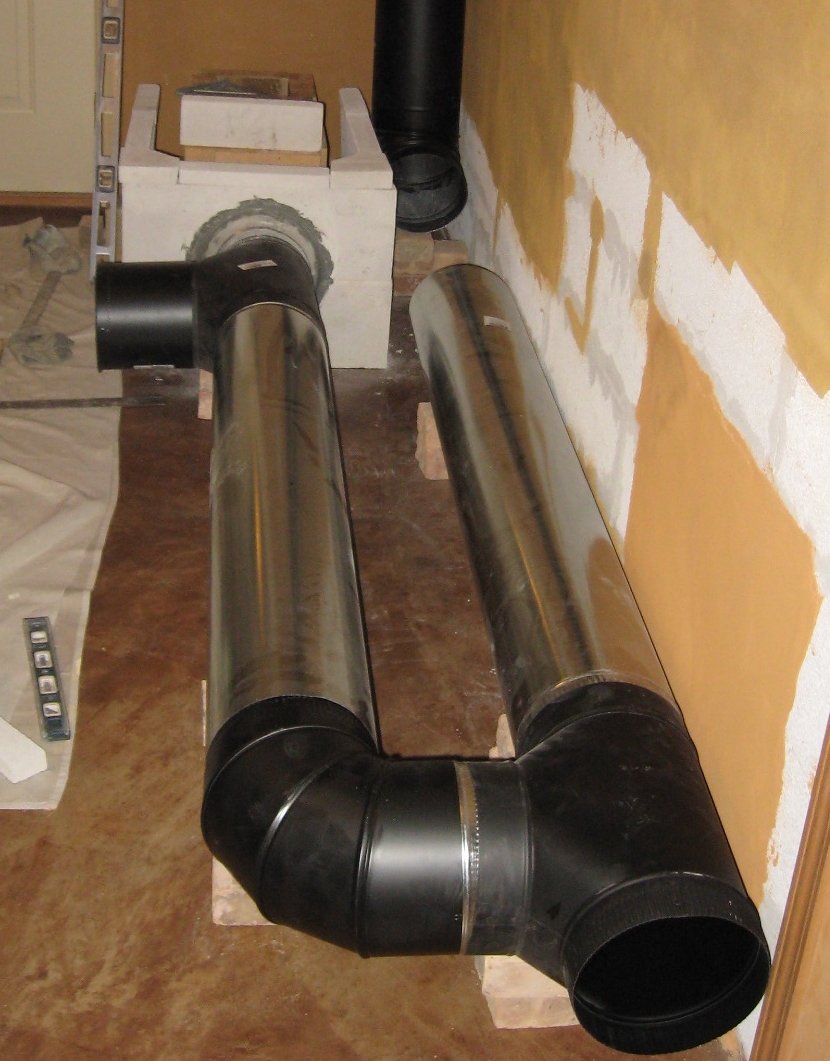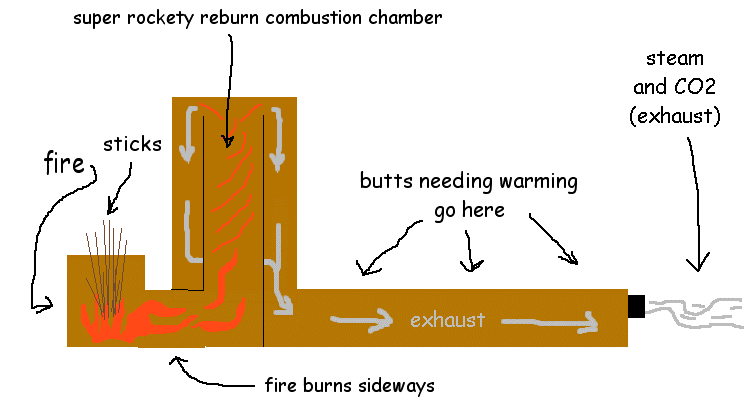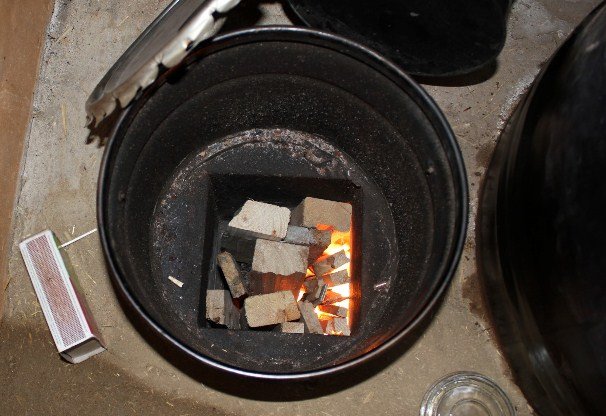Discover the Wild Leek (Ramps)
Learn how the influence of ramps has built relationships within
Learn how the influence of ramps has built relationships within
What is a composting toilet? A composting toilet is a
Here is the latest presentation and virtual tour of how
Spring is here at Midwest Permaculture. It’s time for the
Why Thermal Mass Rocket Stoves are part of This Permaculture Design
Whereas wood gasification turns wood scrap into a flammable gas to run engines (generating electricity power and heat), a thermal mass rocket stove simply turns scrap wood into heat…. lots of heat…with a lot less wood!!! So, we have included them in our overall design, especially for Earthcamp Village, because they are:
Bottomline: They burn 1/4 of the wood to generate the same heat from a conventional wood stove and the outgases are 90% cleaner as well. The Key? They burn the wood, smoke and gasses at very high temperatures…SAFELY! |

Not long ago, our friends and neighbors, Bev and Wayne, started to build a thermal mass rocket stove in their living room. Wayne took one of our PDC courses and was inspired by the rocket stove concept (See the illustration and links below).
Bev and Wayne have been sharing their adventure with us and we are very excited about the possibilities.
Imagine having a wood burning stove in your home that:
The big thing for us, living here on the prairie in Illinois surrounded not by woods or forests but by corn and bean fields, is the very real shortage of easily available firewood.
What I am talking about are the large hardwood trees with trunks and large branches which are typically chainsawed to length and then split to fit into a wood burning stove. All of this tonage of wood then needs to be hauled out of the woods, dumped or stacked somewhere, then loaded back into a truck for delivery to be driven to someone’s home (a lot more energy) and then unloaded and stacked again for winter use.
Up-to-date Picture of Above Stove at Bottom of this Post
|
About the Thermal Mass Rocket Stove… When fired up properly, the stove can make a quiet sound, similar to that of a “rocket” as the high temperatures uniquely created within the stove pull in more and more air and burn off the hot gasses from the burning wood. Click on the photo below to read a great article about these stoves. 
|
|
This book explains in detail exactly how to build one, then how to use it in a range of applications. They discuss materials: where to find them, what to pay and how to make use of found and recycled parts. The section on fire and fuels is thorough but simple. |
|
With the use of traditional firewood, we are talking about the consumption of a lot of fossil fuel (gasoline and oil) as well as the need for a good amount of human labor (time). |
So, imagine for all of us prairie or rangeland dwellers that there would be an option to be able to grow and harvest the wood we need to keep warm in the winter within 2-3 years, instead of waiting 10-20 years for a tree to grow large enough to harvest. These thermal mass rocket stoves can easily burn 1-2 inch diameter branches which can be grown in a short time and harvested with just loppers or pruning shears.
|
|
|
This is big…big…big…news…!!!
When the price of fossil fuels and electricity begin to soar, so will the price of firewood. With an increase in the demand for firewood comes the risk of harvesting too many of our trees and the potential to further disrupt the ecological balance on our planet. Besides, a full size tree takes a couple of decades to grow. Will we really have time to wait?
| With the use of a thermal mass rocket stove, our annual supply of firewood could be harvested with a pair of loppers, pruning shears and a garden cart. |
 Photo: Bill Hogarth, an English expert Coppicing Hazelnut
Photo: Bill Hogarth, an English expert Coppicing Hazelnut
Quite literally, farmers will be able to convert some of their prime (and not so prime) farmland into the raising of selected firewood brush using the long honored art of coppicing. For example, a farmer could grow hazelnut bushes for the nuts. Once every 7-10 years, it’s a good practice to coppice the hazel bush (cutting it completely off, close to the ground) thus harvesting the perfect firewood for a rocket stove. The next season the hazel bush springs back to life and will begin producing nuts again in another 2-3 years.
This is why permaculturalists have such a passion for food forests. In a food forest we not only grow the foods we need to eat, we can also produce fuel and fiber while simultaneously building topsoil. Food forests improve the land and water with every successive generation of farmers. Traditional row-crop farming however does just the opposite. We loose massive amounts of topsoil every year worldwide and especially on industrial farmed soils.
So, the implications of the widespread use of this stove and a new firewood harvesting system are substantial:
Cheers…. Bill Wilson



Here is a Link to a fun article from ‘Morning Chores’ with:
21 Free DIY Rocket Stove Plans for Cooking Efficiently with Wood
[contentblock id=10 img=gcb.png]